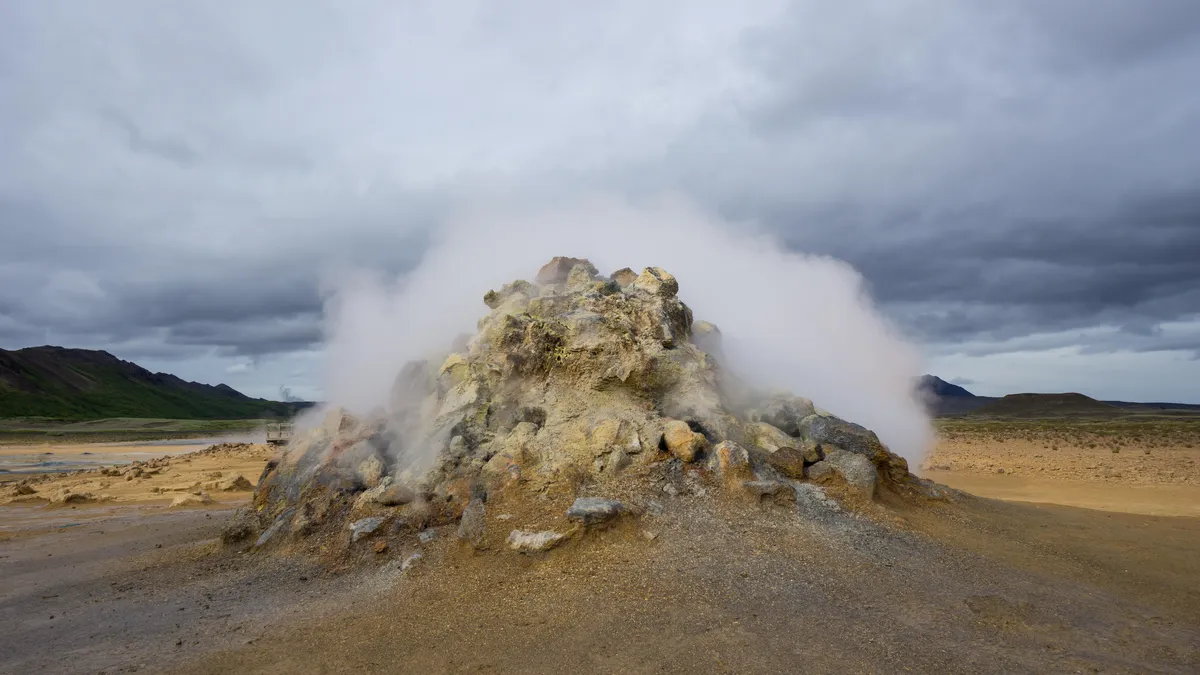
Recent scientific breakthroughs indicate that hydrogen reservoirs are concealed in numerous regions across the globe, including at least 30 U.S. states. The discovery of these reservoirs could significantly accelerate the global energy transition. However, until now, geologists have only had a fragmented understanding of how large accumulations of hydrogen form and where they can be located. According to Chris Ballentine, a professor and chair of geochemistry at the University of Oxford and lead author of a recent review article on hydrogen production in Earth's crust, the current challenge is to identify areas where hydrogen has been released, accumulated, and preserved.
Ballentine's new paper begins to address these critical questions. The research suggests that Earth's crust has generated enough hydrogen over the past billion years to satisfy our current energy needs for an astounding 170,000 years. Nevertheless, the amount of accessible and profitably extractable hydrogen remains unclear. Published on May 13 in the journal Nature Reviews Earth and Environment, the review outlines the geological conditions that facilitate the formation and accumulation of natural hydrogen gas underground, making it easier for exploration companies to locate these reservoirs.
Several exploration companies, such as Koloma (backed by Bill Gates' Breakthrough Energy fund), Hy-Terra (funded by Fortescue), and Snowfox (supported by BP and Rio Tinto), are meticulously examining the specific conditions necessary for hydrogen gas accumulation and production. These conditions can vary significantly across different geological environments, according to Ballentine. For natural hydrogen reservoirs to form, three essential elements are needed: a source of hydrogen, suitable reservoir rocks, and natural seals that can trap the gas underground.
There are numerous natural processes capable of producing hydrogen, with the simplest involving a chemical reaction that splits water into hydrogen and oxygen. Any type of rock that supports at least one of these processes can potentially serve as a hydrogen source, as explained by Ballentine. One particularly promising area is Kansas, where a geological feature known as the mid-continental rift formed around 1 billion years ago, leading to a substantial accumulation of rocks, mainly basalts, that can react with water to produce hydrogen.
The quest continues for geological structures that may have captured and stored the generated hydrogen. Based on existing knowledge regarding other gases released from underground rocks, the authors of the review propose that tectonic stress and high heat flow could potentially liberate hydrogen deep within the Earth's crust. This process helps transport hydrogen closer to the surface, where it may accumulate and form a commercially viable resource, according to Ballentine.
The review indicates that a wide variety of geological contexts could be promising for exploration companies. These include ophiolite complexes, large igneous provinces, and Archaean greenstone belts. Ophiolites are fragments of Earth's crust and upper mantle that were once submerged beneath the ocean but have since been thrust onto land. In a notable discovery made in 2024, researchers identified a massive hydrogen reservoir within an ophiolite complex in Albania.
According to study co-author Jon Gluyas, a professor of geoenergy, carbon capture, and storage at Durham University in the U.K., the conditions outlined in the review represent fundamental principles for hydrogen exploration. This research delineates the critical factors that companies should consider when developing their exploration strategies, including the processes through which hydrogen might migrate or be consumed underground.
Co-author Barbara Sherwood Lollar, a professor of Earth sciences at the University of Toronto, emphasizes that environments where bacteria can interact with hydrogen-producing rocks may not be ideal for locating reservoirs, as underground microbes readily consume hydrogen.
Hydrogen plays a vital role in the production of essential industrial chemicals such as methanol and ammonia, a crucial component in most fertilizers. Moreover, hydrogen can facilitate the transition away from fossil fuels, as it has the potential to power both vehicles and power plants. However, the current production methods for hydrogen primarily rely on hydrocarbons, resulting in substantial carbon emissions. In contrast, clean hydrogen sourced from underground reservoirs boasts a significantly smaller carbon footprint due to its natural occurrence. Ballentine concludes that while Earth's crust produces ample hydrogen, the focus now shifts to following the ingredient list to locate it effectively.